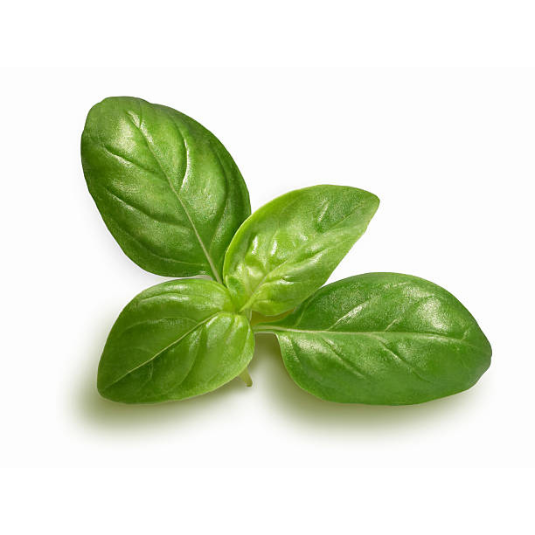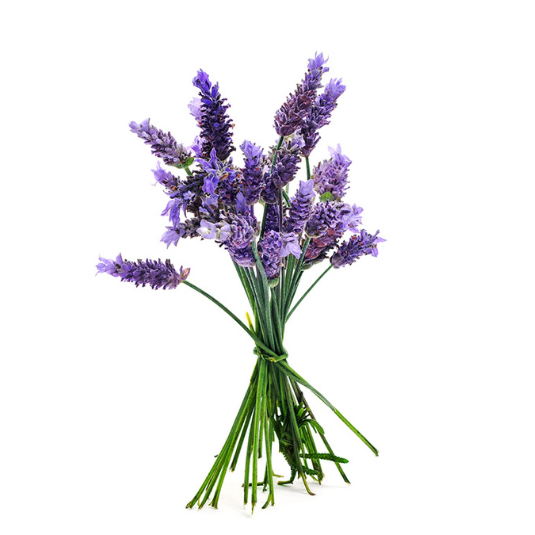What does the word anise mean?
The name and etymology of anise can be traced back to its ancient origins and rich cultural heritage. The word "anise" is derived from the Latin term "anisum", which in turn comes from the Greek word "anison". The Greek word itself has its roots in the Egyptian word "ns", which designates the plant.
In the beginning…
Anise has a fascinating history that spans centuries and cultures. Its aromatic and medicinal properties have been appreciated since ancient times.
• In Egypt, anise was prized for its digestive qualities and for its breath freshening properties. The seeds were used in perfumes and cosmetics, giving them a unique, bewitching scent.
• In ancient Greece, anise was celebrated for its aromatic qualities and therapeutic uses. It then found its way into perfumes, cooking and medicinal preparations. The Romans also appreciated anise for its sweet, spicy scent and incorporated it into perfumes, scented oils and aromatic baths.
• Throughout the Middle Ages and into modern times, anise remained an important ingredient in perfumery in different cultures and regions. It gained popularity in Europe during the Middle Ages, where it was used in perfumed gloves and sachets to mask unpleasant odors and provide a pleasant scent. Anise also played an important role in the production of liqueurs such as absinthe, contributing to their distinctive aromatic profiles.
Today, anise continues to be valued in perfumery for its sweet, licorice-like scent, which adds depth and complexity to fragrant compositions. Its rich history and cultural significance make anise a beloved and timeless ingredient, carrying a legacy of enchantment and allure.
Anise cultivation
Anise is thought to have originated in the eastern Mediterranean region, notably Egypt, Greece and Turkey. It is produced in different parts of the world to meet demand for its various applications. Spain, Turkey, Mexico, China and India are key regions known for their significant anise production. Indeed, these regions benefit from favorable climates and fertile soils, enabling successful cultivation. Spain and Turkey are also major producers, while Mexico focuses on domestic consumption. In addition, China and India cultivate widely for both domestic and export markets, ensuring a steady supply of aniseed for the perfume, culinary and traditional medicine industries.
Anise cultivation involves several essential stages to ensure successful growth and the production of aromatic seeds. It thrives in temperate climates with mild winters and warm summers, and the growing process begins with planting the seeds directly into properly spaced and prepared soil. Indeed, proper watering, fertilization and weeding are essential for healthy plant development. Although anise is relatively resistant to pests and diseases, regular monitoring and appropriate measures may be necessary.
Harvesting aniseed is a crucial step in obtaining ripe seeds with optimal flavor and aroma. Once the seeds have turned brownish-grey and fallen naturally from the plant, the whole plant is cut at ground level; the harvested plants are then dried to facilitate seed extraction. Appropriate drying techniques preserve seed quality and prevent deterioration. The seeds are carefully separated from the plant and stored to preserve their freshness and aromatic properties.
Anise essential oil is derived from the seeds of the anise plant through a process of steam distillation. It is used in various applications, including perfumery, aromatherapy, and culinary uses. In perfumery, anise essential oil is valued for its aromatic properties and is often used to add a sweet and spicy note to fragrances.
Different varieties of anise
Here are some types of anise commonly used in perfumery:
• Aniseed: Derived from the seeds of Pimpinella anisum, aniseed provides a distinct licorice-like aroma. It is frequently used in perfumes to add a warm and sweet note.
• Star Anise: The fruit of Illicium verum, star anise, is known for its intense and spicy scent. It adds a rich and exotic touch to fragrances, often used in Oriental and gourmand compositions.
• Fennel: Fennel is also considered a type of anise. While it is primarily used in culinary applications, its aromatic seeds are occasionally incorporated into perfumes. Fennel brings a fresh, green, and slightly sweet aroma to fragrance compositions.
<
Interesting fact
Anise has many benefits and virtues:
- Digestive aid: Anise aids digestion and relieves bloating and indigestion.
- Respiratory aid: Acts as an expectorant, helping to relieve coughs and congestion.
- Soothing and calming: Anise has mild sedative properties that promote relaxation and relieve stress and anxiety.
- Antimicrobial effects: It has antibacterial and antifungal properties that inhibit the growth of harmful micro-organisms.
- Oral health: Anise freshens breath and promotes oral hygiene.
- Milk production: It may stimulate breast milk production in nursing mothers.
- Antioxidant activity: Anise is a source of antioxidants that protect cells from oxidative stress.
- Culinary uses: Anise adds a distinct licorice-like flavor to a variety of culinary creations.
What do you know about anise in perfumery?
Anise is widely used in perfumery for its distinct, captivating scent.
It is used as a top note in perfumes, providing an initial burst of fragrance. It is also used to add a touch of sweetness and richness to gourmand fragrances. In addition, anise complements the warm, exotic compositions of oriental fragrances and contributes to the creation of spicy accords, blending harmoniously with other spices. In addition, anise adds a bold, assertive facet to men's fragrances. It can also be used to create contrast and complexity when layered with other notes. This is why anise is favored by niche and artisan perfumers for its unique, individual character.
In short, anise is a versatile and sought-after ingredient in perfumery, lending its sweet, spicy and aromatic qualities to create captivating and distinctive fragrances.
Anise contributes to the olfactory harmony of fragrances through its sweet and warm characteristics, its spicy and aromatic accents, its complementary and contrasting notes, its layering possibilities and its ability to add originality and individuality to scented compositions. Its presence enhances the overall scent, creates depth and complexity, and enables the creation of balanced, captivating fragrances. The distinct scent of anise adds a touch of intrigue and leaves a lasting impression, making it an essential element in achieving olfactory harmony in fragrances.
Some popular aniseed perfumes...
Anise has been a notable ingredient in perfumery for many years, and has made its mark in the world of perfumery.
• In Après L'Ondée by Guerlain, anise plays a supporting role, adding subtle warmth and depth to the fragrance. Its sweet, licorice-like scent complements the delicate floral and powdery notes, creating an intriguing, elegant composition. Anise reinforces the overall complexity and timeless charm of this iconic fragrance.
• In Air for Men eau de parfum pour homme by Kenzo, anise plays an important role, contributing to the fragrance's unique and captivating character. Anise adds a fresh, herbaceous and slightly spicy dimension to the composition. Its presence creates a vibrant, invigorating opening, bringing a breath of energy and dynamism. The aromatic scent of anise, reminiscent of licorice, adds depth and complexity to the fragrance, blending harmoniously with the other notes. It reinforces the freshness and masculinity of Kenzo Air for Men, making it a distinctive and memorable fragrance.
• In Gold Knight by Kilian, anise plays a notable role in shaping the fragrance's olfactory profile. Anise brings a warm, spicy and slightly sweet character to the composition. It adds depth and complexity, creating an intriguing juxtaposition with the other notes. The aromatic scent of anise, similar to that of black licorice, adds a touch of mystery and appeal to the fragrance, reinforcing its overall richness.
• An Yves Saint Laurent fragrance that highlights the aniseed notes is Opium. This iconic fragrance offers an enchanting interpretation of anise. Spicy, fresh top notes of mandarin and pink pepper combine with star anise to create a vibrant opening. Next, the heart reveals rich floral accords of jasmine and rose, which blend harmoniously with anise. Finally, the base reveals notes of vanilla, patchouli and amber, adding sensual warmth and oriental character to the whole.
• In the base notes, anise in Armani Code by Giorgio Armani creates a seductive fragrance featuring notes of star anise in its composition, which are revealed in the fragrance's final phase. Anise adds a spicy, sweet touch, adding depth and subtle sensuality to the whole.
Anise X Bon Parfumeur
Embark on a sensory journey that oscillates between tranquility and excitement, serenity and dynamism. Dive into the world of aquatic fragrances, where invigorating freshness reigns supreme.
Immerse yourself in the captivating allure of eau de parfum 803: Patchouli caught in the ice, a fragrance that artfully combines contrasting elements for a truly harmonious experience.
As you embark on this olfactory journey, be prepared to encounter an icy embrace that immediately captivates the senses. The frosty opening reveals a delicate blend infused with hints of the sea, evoking a refreshing and invigorating sensation. The composition takes an exciting turn with the introduction of a tantalizing trio of ginger, pink berries, and juniper, infusing the fragrance with a spirited touch and a subtle spicy allure.
Finally, the magnetic pull of warm patchouli notes emerges from the depths, adding depth, richness, and a sense of power and intensity. This intriguing combination of icy freshness and warm sensuality leaves an unforgettable impression, making eau de parfum 803 a captivating and unique fragrance experience.



















